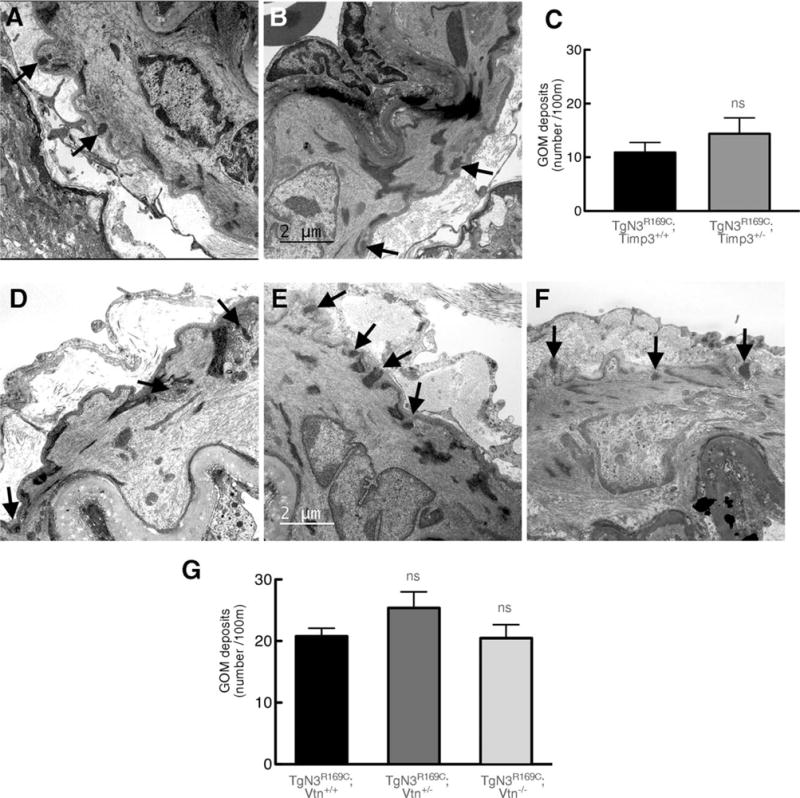FIGURE 8.

Genetic reduction of Timp3 or vitronectin does not affect the number of granular osmiophilic material (GOM) deposits. Shown are representative electron micrographs of segments of middle cerebral artery from TgN3R169C;Timp3+/+ (A) and TgN3R169C;Timp3+/− mice (B) aged 6 months, and from TgN3R169C;Vtn+/+ (D), TgN3R169C;Vtn+/− (E), and TgN3R169C;Vtn−/−(F) mice aged 12 months. Arrows point to GOM deposits. (C, G) Quantification shows that the number of GOM deposits is comparable between TgN3R169C;Timp3+/+ and TgN3R169C;Timp3+/− mice (C) and between TgN3R169C;Vtn+/+, TgN3R169C; Vtn+/− and TgN3R169C;Vtn−/− mice (G; n = 4 mice per genotype). Significance was determined by Student t test (C) or 1-way analysis of variance followed by Tukey post hoc test (G). Scale bar = 2 μm. ns = nonsignificant.
